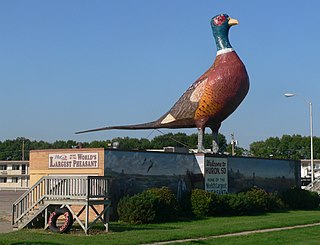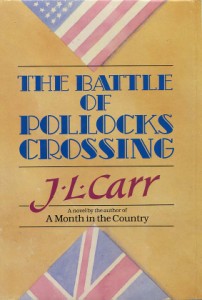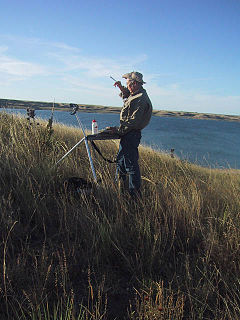Related Research Articles

A book is a medium for recording information in the form of writing or images, typically composed of many pages bound together and protected by a cover. The technical term for this physical arrangement is codex. In the history of hand-held physical supports for extended written compositions or records, the codex replaces its predecessor, the scroll. A single sheet in a codex is a leaf and each side of a leaf is a page.

The Wonderful Wizard of Oz is an American children's novel written by author L. Frank Baum and illustrated by W. W. Denslow. It is the first novel in the Oz series of books. A Kansas farm girl named Dorothy ends up in the magical Land of Oz after she and her pet dog Toto are swept away from their home by a tornado. Upon her arrival in Oz, she learns she cannot return home until she has destroyed the Wicked Witch of the West.

The dime novel is a form of late 19th-century and early 20th-century U.S. popular fiction issued in series of inexpensive paperbound editions. The term dime novel has been used as a catchall term for several different but related forms, referring to story papers, five- and ten-cent weeklies, "thick book" reprints, and sometimes early pulp magazines. The term was used as a title as late as 1940, in the short-lived pulp magazine Western Dime Novels. In the modern age, the term dime novel has been used to refer to quickly written, lurid potboilers, usually as a pejorative to describe a sensationalized but superficial literary work.

Beadle County is a county in the U.S. state of South Dakota. As of the 2020 United States Census, the population was 19,149. Its county seat is Huron. The county was created in 1879 and organized in 1880. Beadle County comprises the Huron, SD Micropolitan Statistical Area.

Huron is a city in Beadle County, South Dakota, United States. It is the county seat of Beadle County. The Huron Daily Plainsman, also referred to as the Plainsman, is the newspaper. The first settlement at Huron was made in 1880. The city was named after the Huron Indians. It is currently the eighth largest city in South Dakota, but it once was the fourth. In recent years, Huron's population has once again started to grow after nearly 20 years of stagnation. A welcoming immigration policy coupled with an economic revival in the area has sparked development. A Walmart Supercenter opened in the mid 2000s. Since Walmart's opening more commercial and residential development has occurred with the completion of a new Runnings store, and many new apartments, twin homes and houses.

Laura Elizabeth Ingalls Wilder was an American writer, mostly known for the Little House on the Prairie series of children's books, published between 1932 and 1943, which were based on her childhood in a settler and pioneer family.

To publish is to make content available to the general public. While specific use of the term may vary among countries, it is usually applied to text, images, or other audio-visual content, including paper. The word publication means the act of publishing, and also any printed copies issued for public distribution.
The bibliographical definition of an edition includes all copies of a book printed "from substantially the same setting of type," including all minor typographical variants.
Legal deposit is a legal requirement that a person or group submit copies of their publications to a repository, usually a library. The number of copies required varies from country to country. Typically, the national library is the primary repository of these copies. In some countries there is also a legal deposit requirement placed on the government, and it is required to send copies of documents to publicly accessible libraries.
Joseph Lloyd Carr, who called himself "Jim" or "James", was an English novelist, publisher, teacher and eccentric.
James Landrum White was a shape note singing teacher, composer, and a reviser of his father's shape note tunebook known as The Sacred Harp.

Ole Edvart Rølvaag was a Norwegian-American novelist and professor who became well known for his writings regarding the Norwegian American immigrant experience. Ole Rolvaag is most frequently associated with Giants in the Earth, his award-winning, epic novel of Norwegian immigrant homesteaders in Dakota Territory.

Erastus Flavel Beadle was an American printer and pioneer in publishing pulp fiction.
The Quince Tree Press is the imprint established in 1966 by J. L. Carr to publish his maps, pocket books and novels. The Press is now run by his son Robert Carr and his wife, Jane.

The Battle of Pollocks Crossing is the sixth novel by J.L. Carr, published in 1985. The novel was shortlisted for the Booker Prize in 1985 and followed a nomination in 1980 for A Month in the Country, his preceding novel.
The Norrœna Society was an organization dedicated to Northern European culture, that published sets of reprints of classic 19th-century editions, mostly translations, of Old Norse literary and historical works, Northern European folklore, and medieval literature. The society was founded toward the end of the 19th century and ceased publications early in the 20th century.

James Pollock is an American artist living in Pierre, South Dakota. Pollock has been characterized as a painter whose work is a bridge between the abstract and the concrete. His style varies widely, sometimes drawing on the abstract styles reminiscent of artists of the early 20th-century Bauhaus school, characterized by strong lines and bold colors, sometimes resembling ancient cave paintings, and sometimes straightforward renderings of landscapes and objects." Pollock is an active plein air painter and member of the South Dakota Plein Air Artists movement.

Ziba Dexter Scott (1846–1922) was a socialist politician and activist in the Dakota Territory and later the United States state of South Dakota.

F. C. W. Kuehn (1884–1970), whose full name was Frank Charles William Kuehn, was an architect based in Huron, South Dakota.

John L. Pyle was an attorney and politician from the state of South Dakota. A Republican, he was notable for his service as State's Attorney of Hand County (1886-1888) and state Attorney General (1899-1902).